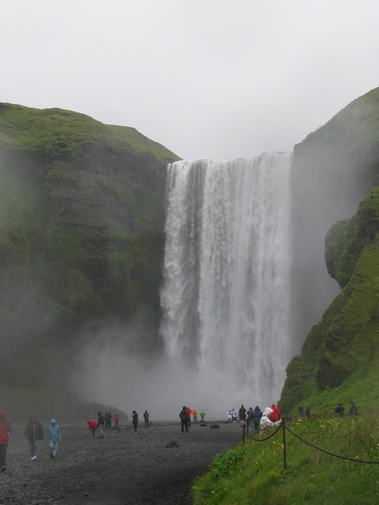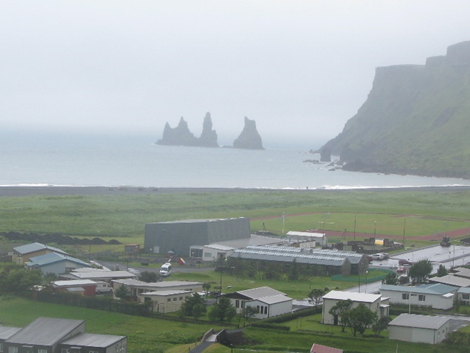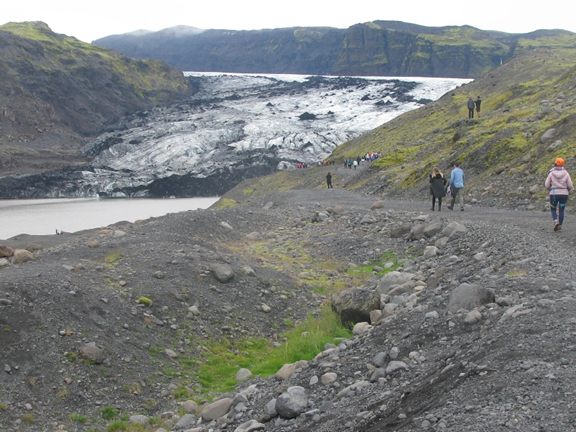Today Ruth and I visited southern Iceland. The scenery was spectacular as we journeyed
past lava fields, volcanos and glaciers despite the wind and rain being mostly
present. This made taking pictures a bit
of a challenge in some places.
Our first stop was to view the Eyjafjallajokull
volcano. In 2010, an eruption of this
volcano sent clouds of ash and dust into the atmosphere, interrupting air
travel between Europe and North America.
This was because of concerns that the material could damage jet engines.
More than 100,000 flights were grounded, stranding millions of passengers.
We then visited the Skogafoss waterfall. Skogafoss is unique because the waterfall
comes directly from two glaciers, Eyjafjallajokull and Myrdalsjokull.
Reynisfjara is a world-famous black-sand beach, just
beside the small fishing village of Vík í Mýrdal where we later had lunch. The black sand is incredibly difficult to
walk on. Ruth had to help me keep me
steady at one point. Our guide Kris made
us aware of the potential dangers present at the beach. First of all, the rolling, roaring waves of
Reynisfjara are particularly violent, often pushing far further up the beach
than many would expect. By the time we
returned to the minibus we were like two drowned rats.
One obvious feature of Reynisfjara was the rocky sea stacks sitting off the
shoreline, known as Reynisdrangar.
According to local folklore, these large basalt columns were once trolls
trying to pull ships from the ocean to shore. However, these trolls were dim and went out
too late in the night; dawn broke on the horizon, turning the trolls into solid
stone.
Ruth and I had lunch in a brewery restaurant in Vík í
Mýrdal. I tried one of the house beers
which was good, hoppy as I like my beer.

After lunch we went to see the Mýrdalsjökull Glacier
which is the fourth largest glacier in Iceland, about 600 km2. The part of the glacier covering the caldera
of the powerful Katla volcano is about 750 meters of ice. Katla is very active and has erupted on
average once every 60 years. The last eruption was in 1918. Katla is very powerful and, during her
eruptions, brings huge amounts of melted glacier ice in a very short time. This causes huge glacier floods which
jeopardises local settlements.
Our guide offered to take a picture of Ruth and I by the
glacier.
We made a short stop to look at an Icelandic turf
house. These turf houses would have a
large foundation made of flat stones.
Upon this was built a wooden frame which would hold the load of the
turf. The turf would then be fitted
around the frame in blocks

We ended our day at the beautiful Seljalandsfoss
waterfall. It cascades over steep cliffs
which makes it possible for people to walk behind the waterfall. I chickened out of doing this because the
path was very slippery.










No comments:
Post a Comment